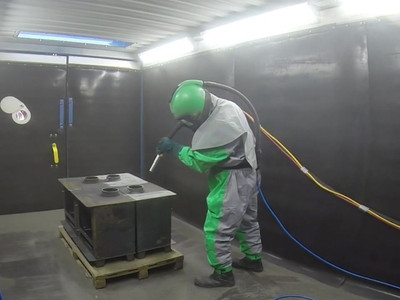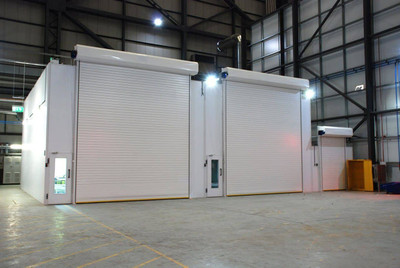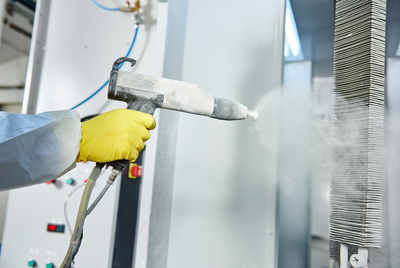23rd Jan 2025
Spraying paint on ceilings and walls is a highly efficient and effective technique that can help you achieve a smooth, even finish in much less time compared to traditional roller and brush methods. Understanding the right sprayer technique is key to ensuring a flawless result. Here's a step-by-step guide on how to paint spray ceilings and walls with precision.
Prepare the area
Before you begin, it’s crucial to properly prepare the space. Start by covering furniture, floors, and any fixtures with drop cloths or plastic sheeting to protect them from overspray. Ensure that the area is well-ventilated, especially if you’re working indoors. Mask off edges and trim using painter’s tape to achieve clean lines.
We would recommend that you wear PPE suitable for spray painting, such as the Blastsafe Gobi Inspection Suit, a category 1 "light protection suit", for light dust and paint work.
Select the right sprayer
Choose a spray pump and gun that’s appropriate for your project. For large areas like walls and ceilings, an airless paint sprayer is often the best option. These sprayers provide a smooth, consistent application and are capable of handling larger volumes of paint.
You can see the full range of spray equipment available from Airblast Eurospray Direct here.
Set up your sprayer
Fill the sprayer with the appropriate paint for your surface. Make sure to thin the paint if necessary, as thicker paint can clog the sprayer or result in an uneven finish. Test the spray on a piece of scrap material to adjust the pressure and spray pattern.
Spray with consistency
When spraying ceilings and walls, aim to maintain a consistent distance from the surface (typically 12-18 inches) and keep the sprayer moving to avoid over-application in one spot. Move in long, sweeping motions and overlap each pass by around 50% to ensure even coverage. Start at the top of the wall or ceiling and work your way down, keeping the sprayer parallel to the surface.
Use proper technique
Ceilings: Begin by spraying the edges first and then move to the centre of the ceiling. Work in small sections, applying thin layers. This will help prevent drips and ensure a smooth finish.
Walls: Spray in vertical or horizontal lines, depending on your preference, but always maintain a steady hand. Don’t forget to keep your wrist flexible to avoid unwanted streaks or splatter.
Apply multiple coats
To achieve the best results, it’s often necessary to apply two or more thin coats of paint. Allow each coat to dry before applying the next. This not only ensures that you get a uniform finish but also helps the paint to cure properly.
Clean your equipment
After finishing your project, thoroughly clean your paint sprayer according to the manufacturer's instructions. This will prevent clogs and ensure the longevity of your sprayer for future use.
Conclusion
Using a paint sprayer for ceilings and walls can save you time and deliver professional-quality results when done correctly. By following the steps outlined above, you’ll be well on your way to achieving a smooth and flawless finish. With a little practice, you’ll be able to master the technique and tackle any painting project with confidence.




